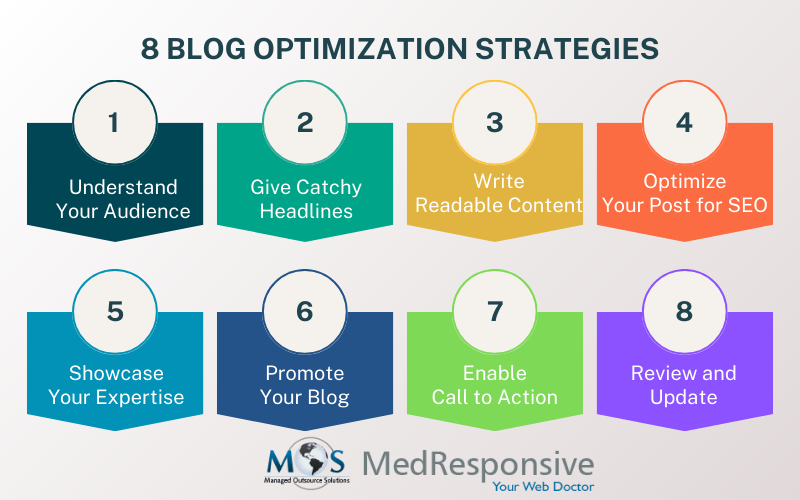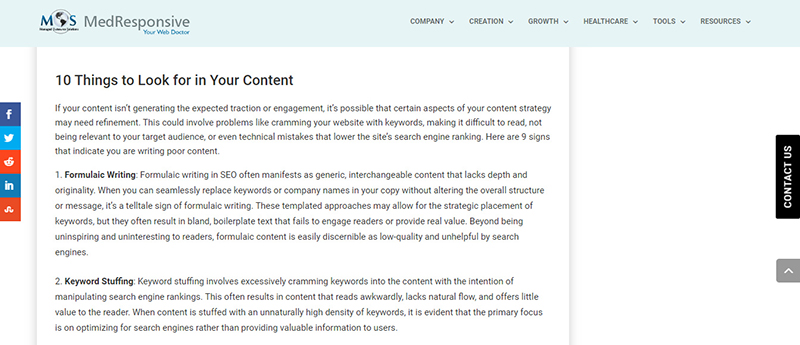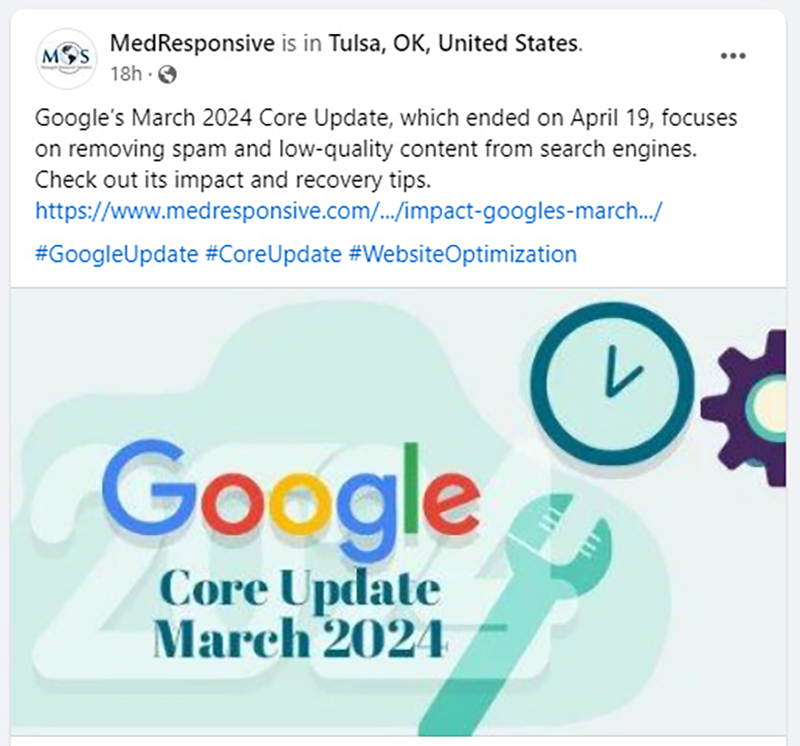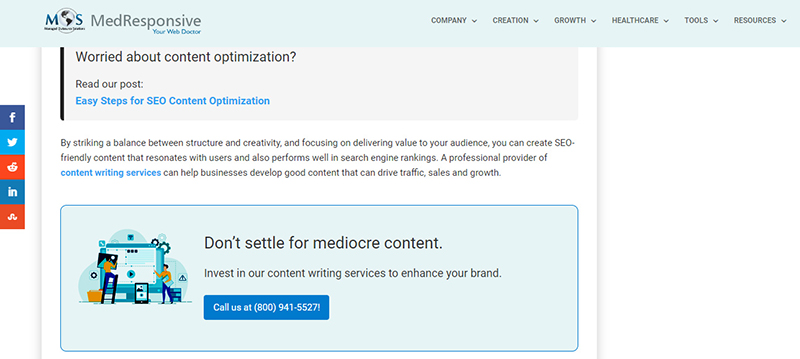Whether you are a small business owner wanting to take your company to the next level or an entrepreneur bursting with exciting ideas to bring to life, a blog must be an integral part of your content marketing. It is one of the oldest strategic tools that have been used successfully over the past two decades. But is it effective in 2024? For blogging to be effective, it just isn’t enough to have an active blog up and running; you need to know how to leverage it well to captivate your audience, drive high engagement and ultimately, achieve conversions. So, don’t be discouraged if you haven’t seen explosive results from blogging so far. The good news is that there are strategic steps that you must follow to produce good content that converts. Consider these statistics before writing off blogging as a thing of the past.
- Companies with blogs get 55% more visitors than those who don’t (HubSpot).
- Companies that blog produce, on average, 67% more leads than those who do not blog (Demand Metric).
Let’s dive in and discover the essential steps to optimize your blogs.
Step 1: Understand Your Audience
The first and foremost step when considering writing a blog is to know who you are catering to, and what kind of content you should create. While it sounds appealing to make everyone your target reader, chances are this might end up backfiring as it may not reach the intended audience. So, do a detailed research and define the buyer persona of your blog. Once you gain insight into your target reader’s interest, needs and problems – you can tailor your content to address their concerns and provide valuable solutions.
Doing so establishes an emotional connection with the readers, which gives them a reason to keep coming back and ultimately convert. Also, include a space dedicated to audience reviews, so that readers looking for authentic information can learn about other customers’ first-hand experience with your company.
Step 2: Give Catchy Headlines
As they say, the first impression is the best impression. This is certainly true for blogs since a headline is what first grabs a reader’s attention and makes him/her click. The goal of a headline is to induce curiosity in the reader and sustain their interest. In a study conducted by Buzzsumo, the ideal headline length was found to be 11 words and 65 characters, thus a clear and concise statement is what draws the audience in.
Some key ways to headline an article are as follows:
-
- Numbered headline
Numbering your headline is incredibly powerful as proven from a study by Buzzsumo with the maximum engagement generating from number 10, followed by number 5.
-
- Focus on pain points
Focusing on one pain point faced by your audience, and using power words to invoke emotions strengthen the headline. For example, a generic headline like “How to increase productivity” doesn’t sound as compelling as “10 proven ways to boost productivity at work”.
-
- Personalize
A personalized headline is relatable and trustworthy from an audience perspective since it is a lived experience. Readers who might be looking for personal solutions to issues pertaining to topics like health, relationships etc. want someone who has experienced similar situations as them.
Step 3: Write Readable Content
Let’s be real, no one wants to open a blog to see massive walls of text staring back at them. Here are a few tips to make your blog scannable:
- Use shorter paragraphs; if you have long paragraphs divide them into smaller ones.
- Use subheadings, bullet points or lists wherever necessary.
- Employ various visuals throughout your blogs like GIFs, photos, and videos.
- Choose font size and image that are easy on the eyes.
Step 4: Optimize Your Post for SEO
Great content is not just about providing information, it is also about crafting your blog for search engines (SEO) with relevant keywords, Meta descriptions and so on. Many B2B companies launch blog writing services with the key intention of ranking higher in the search results. A better SEO performance means more organic traffic, and thus more sales.
Checklist to cross off while evaluating for SEO elements:
- Keywords – Learn about keywords that can make your blog SEO-friendly and include them in your content. You can use tools like Google Keyword Planner, KWFinder, or MOZ to find keywords.
- Meta tags – Optimize your Meta tags like Meta title and Meta description with unique, concise content that accurately summarizes your post.
- URLS – Use a URL with simple and relevant keywords to improve your blog’s visibility.
- General SEO – Optimize other areas of your blogs like headings, subheadings, image name and alt text, and fast-loading mobile-friendly pages for an overall better experience.
- Internal links – Including relevant internal links helps to make readers stay longer on your blog and promote your other content.
Step 5: Showcase Your Expertise
If you are committed to making an impact — then you need to rise above your competitors and establish expertise in your preferred field. Take care to produce well-researched, useful, high-quality content indicating that you are a trusted go-to source of your chosen field.
For you to achieve this, ask yourself these questions.
- How’s your blog unique?
- Why should readers prefer your blog over others?
- What can they get from your blog that isn’t elsewhere?
- What urges them to come back to your blog over and over again?
- Would they love your content enough to share it with others?
Be willing to demonstrate practical solutions without appearing desperate or pushy-as it can push your audience away. Do it by offering a free trial or download. When you do so, it demonstrates your firm faith in your product and will gain an edge over competitors.
According to Orbit Media, bloggers who publish more often are 50% more likely to report strong results. So, developing consistent, outstanding content over time creates brand awareness and recognition. If you dare to be original and share topics regardless of the controversial factor, you can cultivate your own space that resonates with fresh minds. Once you have an established audience, you can initiate discussions, explore industry trends and future predictions, inspire change and challenge traditional wisdom in the industry.
Step 6: Promote Your Blog
You have a solid blog strategy and good, regular quality content in your plan. Now what? If people fail to notice your work then all your hard work goes down the drain. This is why promotion and distribution are vital. To promote your blog, you can do the following:
-
- Share your blog links – This is the easiest, cost free method available to promote to newer audiences. Share your post with attention-grabbing descriptions and visually appealing images.
- Engage with your audience – Clarifying your reader’s doubts and queries, responding to comments and being open to constructive criticism may increase the visibility of your blog.
- Subscribers – You can build a sustainable audience for your blog by maintaining an email subscription list. Give a glimpse of your blog through a few free pieces, and keep your highest-quality content to subscribers only. Suggest to your readers that your blog is an investment and not a hobby.
Step 7: Enable Call to Action
Place multiple CTAs thoughtfully and strategically throughout your blog post to generate more leads, engagements, downloads, requests, revenue and so on. The type of Call to Action changes according to placement and content type. For example, CTA at the beginning of the page may be a text-based in-line CTA introducing your content whereas an end-of-post CTA might be a direct approach advertising to encourage them to purchase your service. Without being intrusive, your CTAs should tell people what they are going to receive from your product or service.
Step 8: Review and Update
To measure the success of your blog or analyze the return on your marketing efforts, you need to review and understand what is working well, where it needs improvement, and make an informed decision to improve future performance. Here are some good metrics you can employ to determine the success of your blog:
-
-
- Track the amount of organic traffic generated and sources of that traffic
- Monitor engagement metrics such as the number of social media shares, likes and comments, page views per post, email subscribers and total reach across all the platforms.
- Use tools like Google Analytics to gather blog statistics. You can compare the performance of your blog to other competitors, measure the number of visitors per page, average time spent on the page, track inbound links and conversion rates. These values help to develop a data-driven strategy to optimize your blog performance.
-
Periodically review your older posts and identify improvements. By regularly updating your old blog posts the information you provide stays relevant. This way the blog pages that drive most traffic are always up-to date on content and context.
Writing filler content for the sake of it won’t get you the results you want. Instead of churning out articles upon articles, focus on developing original, authentic, value-driven content that your target audience is looking for. You can build a powerful blogging strategy in keeping with your overall marketing goals with the support of a reliable provider of digital marketing services.
Take your brand to new heights online.
For expert content creation services.









